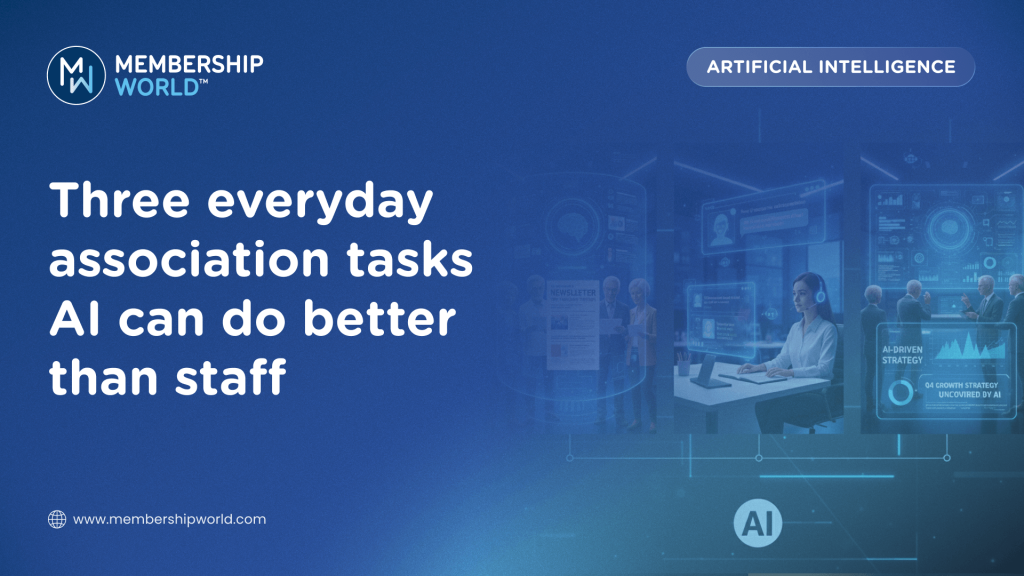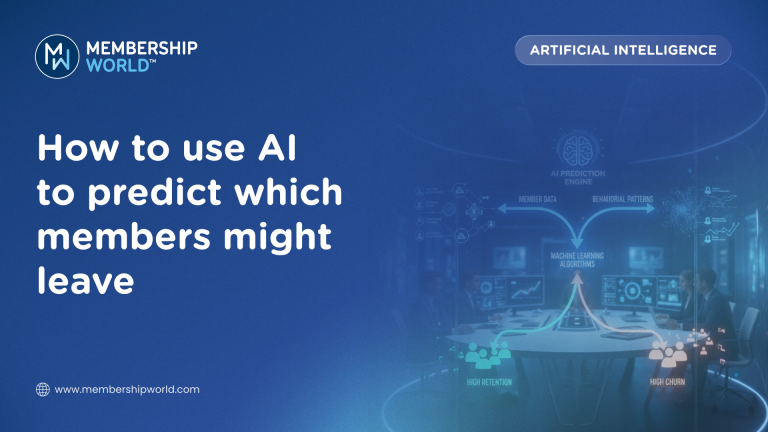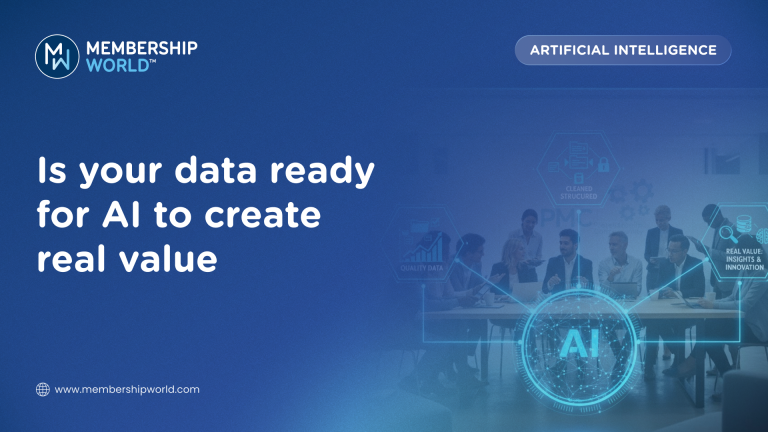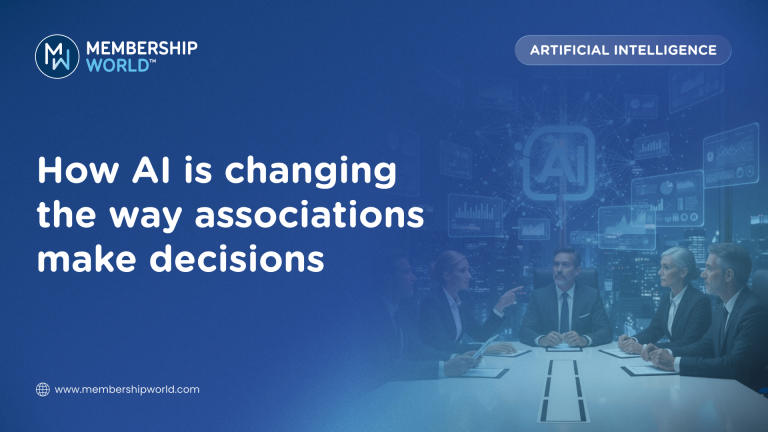
Artificial intelligence is often talked about in terms of big, bold transformations. People imagine futuristic scenarios, disruptive innovation, or highly technical projects. But in reality, some of the greatest benefits of AI for associations are much simpler: it quietly takes over the everyday tasks that consume staff time and energy.
The truth is that most association teams are already stretched thin. Staff juggle member communications, events, education programs, finance, data management, and countless other responsibilities. There’s rarely enough time in the day, and often the work that suffers is the work that requires creativity, empathy, and relationship-building — the very things that make associations unique.
That’s where AI comes in. It doesn’t have to replace staff or take over entire functions. Instead, it can handle the repetitive, time-consuming jobs that weigh teams down. By automating the small things, associations unlock more time and energy for staff to focus on big things.
TLDR:
- AI can make a real difference in day-to-day operations, not just strategy
- Everyday tasks like content drafting, data cleaning, and member support are low-hanging fruit
- Staff save hours each week, freeing them for higher-value work with members
- The goal is not replacement but amplification: AI takes the routine, people take the meaningful
Task 1: Drafting and Editing Content
Associations are content machines. Newsletters, blog posts, member updates, social media campaigns, policy briefs, event descriptions — the list is endless. For small teams, just keeping up with content demands can feel overwhelming.
This is where AI can be a quiet hero. Modern AI writing tools can:
- Summarise lengthy policy documents into digestible member-friendly briefs
- Draft blog posts or reports from outlines or transcript
- Suggest multiple headline variations for promotions
- Create tailored social media snippets from longer content
- Check tone, grammar, and readability in seconds
Here’s a practical scenario. Imagine an association has to send out a weekly member newsletter. Traditionally, a staff member might spend half a day pulling articles together, writing intros, and editing. With AI, that same person can paste key updates into a tool, generate a first draft in minutes, and spend the rest of the time refining tone and ensuring alignment with member priorities.
The result isn’t just faster content. It’s also better content. Instead of rushing, staff can focus on making sure communications are engaging, relevant, and human. AI removes the blank-page stress and the repetitive formatting, leaving staff free to use their expertise where it matters most.
Task 2: Data Cleaning and Segmentation
Every association has a database problem. Member records that are outdated, duplicated, or inconsistent create headaches for staff and missed opportunities for the organisation. Manually cleaning and managing this data is slow, frustrating, and error-prone.
AI is increasingly capable of handling these messy tasks. With the right tools, it can:
- Detect and merge duplicate records automatically
- Standardise inconsistent job titles into clear categories
- Flag incomplete profiles for follow-up
- Identify patterns in member behaviour that suggest new segments
For example, AI might notice that a group of members regularly attends sustainability webinars but has never registered for an in-person conference. That insight could allow staff to create a targeted “virtual-first” membership package or offer.
Instead of spending hours wrestling with spreadsheets, staff can use their time to design creative campaigns and tailored experiences. The database becomes a living resource, not a constant burden.
Task 3: First-Line Member Support
Every association staff member knows the grind of repetitive enquiries. “Where do I find my invoice?” “How do I reset my password?” “What’s included in my membership level?” These questions may be simple, but they add up — sometimes hundreds of them every week.
AI-powered chatbots and virtual assistants are now strong enough to handle most of these requests. They can:
- Provide instant answers to FAQs 24/7
- Guide members through processes like event registration or resource downloads
- Escalate complex queries to the right staff member
- Learn from past conversations to continually improve responses
This doesn’t just save staff time. It also improves the member experience. Instead of waiting for office hours or email replies, members get immediate support. Meanwhile, staff are freed up to handle nuanced conversations that require empathy, problem-solving, or strategic thinking.
One membership organisation recently noted that after launching an AI chatbot, the number of staff hours spent answering basic enquiries dropped by 40%. Members were happier, and staff could finally focus on proactive engagement instead of firefighting.
Why These Everyday Tasks Matter
Some leaders still see AI as a distant project or a tool that requires major investment. But the examples above show that it’s already solving problems today.
The key point: everyday tasks matter. They are the ones that quietly consume the most staff energy and create the most frustration. By targeting content, data, and support — the daily bread-and-butter — associations can quickly see returns without a massive learning curve.
This shift also sends an important signal to staff. When an organisation invests in AI to lighten their load, it shows respect for their time and skills. Staff no longer feel bogged down by routine tasks but empowered to focus on the work that energises them and delivers the most value to members.
Starting Small: How to Try This
For associations considering AI, the advice is simple: start small. Don’t aim to transform your entire operation overnight. Instead:
- Identify one or two tasks your staff spend too much time on.
- Test a tool that can automate or support those tasks. Many offer free trials or low-cost entry points.
- Measure the impact — not just in time saved, but in member satisfaction and staff morale.
- Iterate and expand into other areas once you see results.
This approach reduces risk and builds confidence. It also helps staff feel part of the journey, rather than threatened by it.
Beyond the Everyday
Once associations gain comfort with AI for simple tasks, the possibilities expand. Some are experimenting with AI-driven personalisation in learning programs. Others are using it to forecast event attendance, monitor financial trends, or even generate creative ideas for campaigns.
But the everyday remains the most important starting point. By solving the tasks that staff handle daily, AI creates immediate value — and lays the foundation for bigger innovation down the line.
Final Thoughts
AI doesn’t need to be intimidating or futuristic to make a difference. In fact, its greatest impact for associations may come from the most ordinary places: the content that needs to get written, the data that needs to be tidied, the members that need quick answers.
By letting AI take on these tasks, associations free their staff to focus on what humans do best — building relationships, solving complex problems, and creating communities that members love.
The goal isn’t replacement. It’s amplification. AI does the routine. People do the meaningful. Together, they create stronger, more resilient associations.
💬 What about your organisation? Which everyday tasks could AI take off your team’s plate tomorrow?



